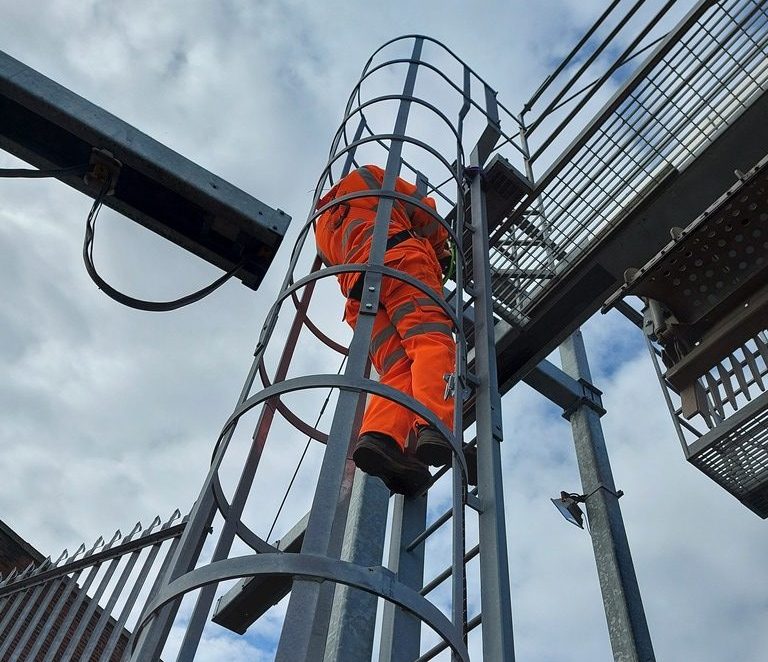Ladders
Fixed Ladder Safety: Understanding the Risks and How to Mitigate Them
Fixed ladders are common in many industrial and commercial settings, providing essential access to elevated work areas. However, they also pose significant safety risks if not properly maintained or used, and falls from ladders are among the leading causes of workplace injuries and fatalities. To ensure worker safety, it’s crucial to understand the risks associated with fixed ladders and how to effectively mitigate them.
Common Risks Associated with Fixed Ladders
- Falls from Height: The most significant hazard associated with fixed ladders is the risk of falling, which can result in severe injury or death.
- Structural Failures: Corrosion, wear and tear, or poor installation can compromise the structural integrity of fixed ladders.
- Slips and Trips: Slippery surfaces due to oil, water, or ice can lead to slips, while obstructions around the ladder base can cause trips.
- Overloading: Exceeding the ladder’s load capacity can lead to collapses or falls.
- Inadequate Training: Improper climbing techniques and lack of safety knowledge increase the risk of accidents.
How to Mitigate Fixed Ladder Risks
1. Perform Regular Inspections and Maintenance
One of the best ways to reduce risk when using a fixed ladder is to conduct routine inspections to check for any damage such as rust, cracks, loose bolts, or broken rungs. You should then perform maintenance promptly to address any issues found during inspections and make sure your ladder is in top condition.
2. Use a Fall Protection System
A fall protection system is essential to maintain safety when working at height. Ladders over 2.5 metres tall should have ladder safety systems installed such as cages, hoops, or personal fall arrest systems. You should also ensure all workers are trained on how to properly use fall protection equipment.
3. Maintain Safe Climbing Practices
When climbing a fixed ladder, make sure to employ safe climbing practices. This includes maintaining three points of contact with the ladder at all times. Similarly, always face the ladder when ascending or descending, and never carry tools or materials in hand – use tool belts or hoists instead to keep your hands free for climbing.
4. Clear and Safe Access Area
To reduce fixed ladder risk, always ensure there is a clear and safe access area. You can do this by keeping the ladder’s base and surrounding area clear of debris, tools, and other obstructions. Further, make sure there is adequate lighting and signage around the ladder access points to help make getting on and off the ladder as easy and safe as possible.
5. Proper Training and Education
To ensure worker safety when using ladders, make sure to provide thorough fixed ladder training, including the correct use of fall protection systems and emergency procedures. You should conduct regular safety drills and refresher courses to stay up to date with fixed ladder safety and reinforce safe practices.
Minimise Fixed Ladder Safety Risks
Fixed ladders pose significant safety risks. By understanding these risks and implementing effective safety measures, you can significantly reduce the likelihood of accidents in the workplace. Prioritising regular inspections, using proper fall protection, and training workers on safe practices are crucial steps toward ensuring ladder safety. Remember, safety on fixed ladders isn’t just about compliance – it’s about protecting lives!


